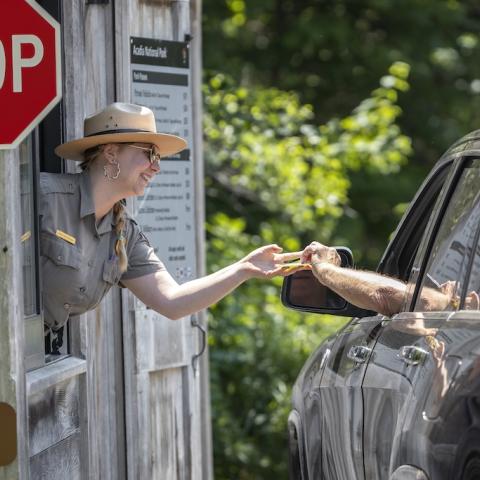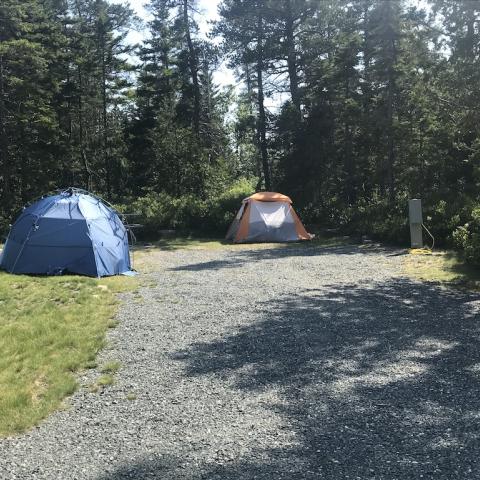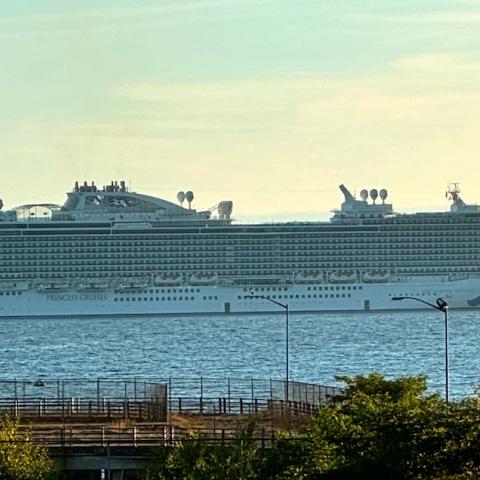
Winter storms can create ideal conditions for cross-country skiing in Acadaia National Park/NPS
With most portions of Acadia National Park’s 22-mile Park Loop Road closed to wheeled vehicles and snow-covered in winter, experiencing the park becomes a more intimate experience. Gone are the long lines of cars and crowds of people three deep at the most popular spots. Instead, there’s bright sunshine glistening on fresh snow and miles of carriage roads and other paths awaiting exploration by those on cross-county skis or snowshoes.
Because it is right on the ocean, having a constant coating of snow is not a given in Acadia. Still, when conditions are right, the park buzzes with people looking to shake off cabin fever.
During winter, one lane of the Ocean Drive section of the Park Loop Road is plowed for motor vehicles. Skiers, snowshoers, and snowmobilers can use the other lane, provided conditions warrant.
The rest of the park’s auto roads, as well as more than 40 miles of carriage roads, give ready access to the park’s interior. All foot trails remain open in winter as well, although hikers are encouraged to carry footwear traction to help negotiate frequent patches of glare ice.

Friends of Acadia makes possible a winter trail grooming program at Acadia National Park/Friends of Acadia
When conditions allow, members of Friends of Acadia’s Acadia Winter Trails Association groom several carriage road loops for classic and skate skiing. Regular grooming reports can be found on this page within the Friends of Acadia website. For those intrepid enough to reach the park’s wind-swept summits in winter, avian visitors from the far north, Snowy Owls, can sometimes be seen.
Come winter, the lakes and ponds inside the park buzz with activity. Many are dotted with cozy ice shacks dragged out by anglers who don’t consider winter the off-season. When there is plenty of smooth, clear ice, ice boats can be seen racing back and forth on Eagle Lake, Jordan Pond, Long Pond, and Echo Lake.
Winter weather conditions in Acadia vary widely from month to month and can even swing widely in just a few hours. In late December, January, February, and in early March, temperatures as cold as 15 below zero are not unusual. At the same time, especially early and late in the season, daytime temperatures in the high 40s or low 50s can be experienced.
Park officials urge winter visitors to be prepared for all extremes. Multiple layers of outerwear ensure a range of options for personal comfort and should always include a waterproof shell.
And remember, although the entrance fee station on the Park Loop Road, near Sand Beach, is not staffed in winter, all park users are required to have an entrance pass.




 Support Essential Coverage of Essential Places
Support Essential Coverage of Essential Places






